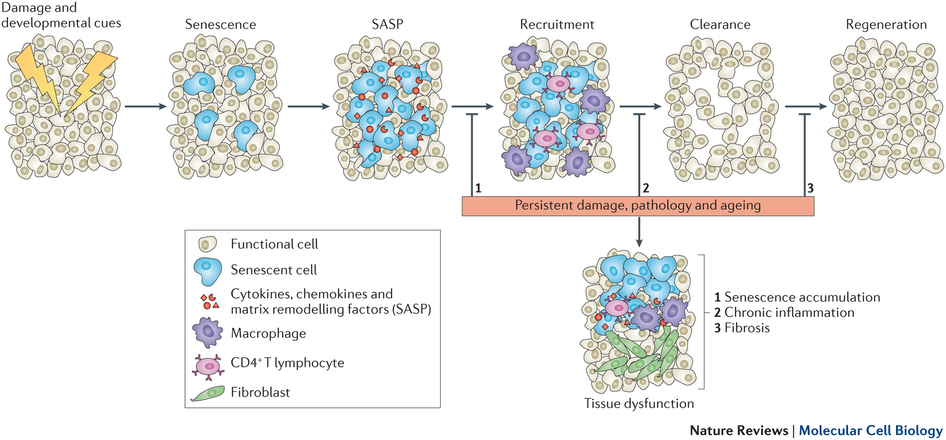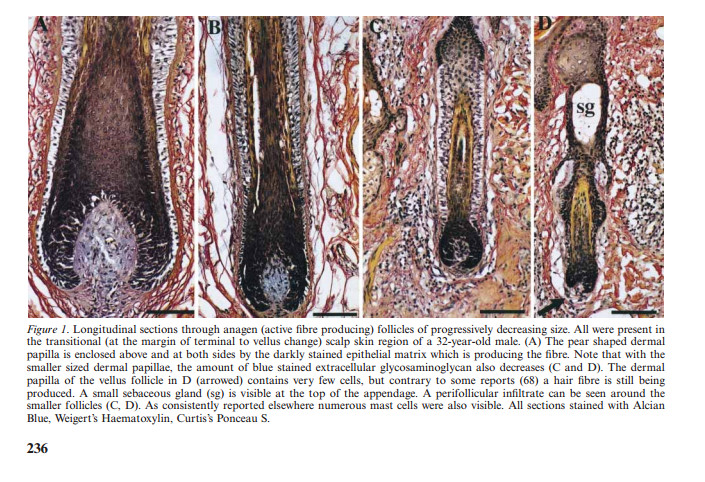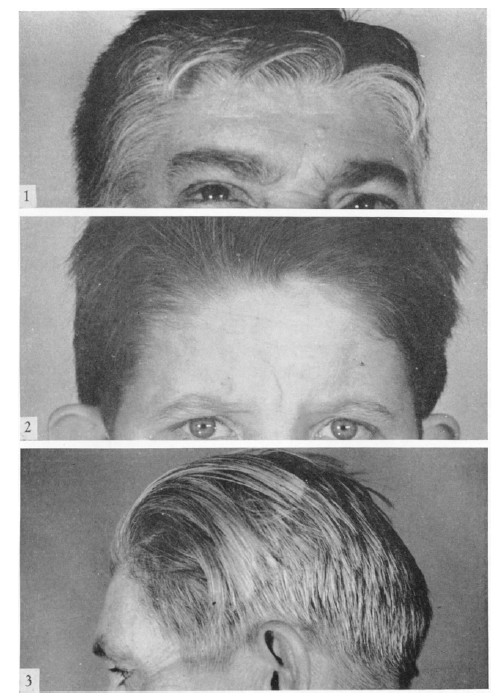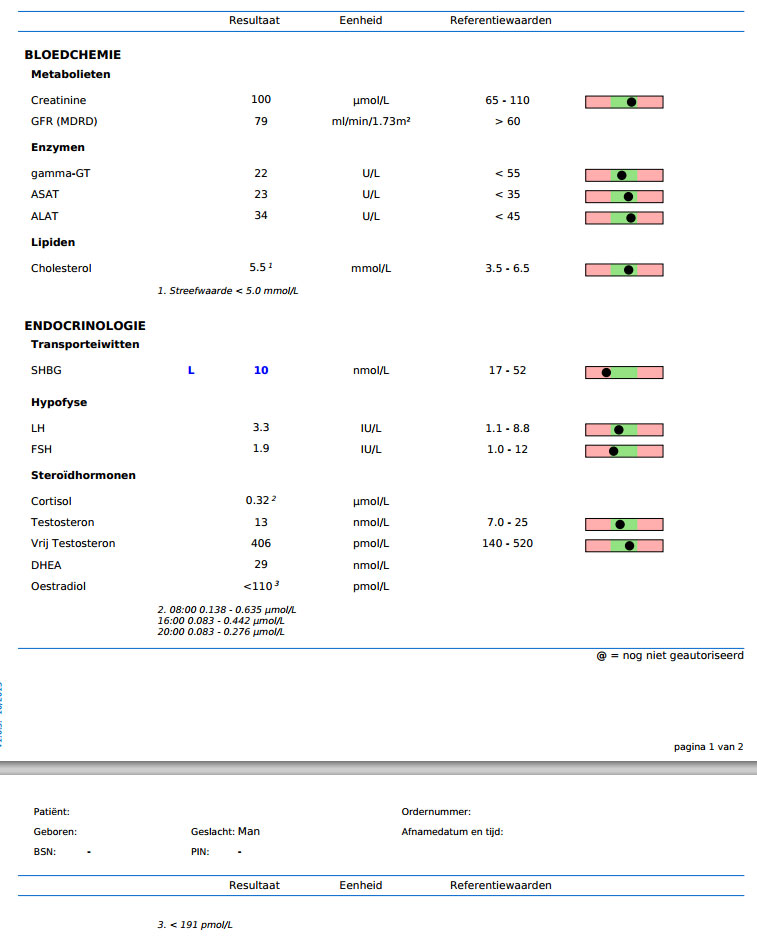This is a really informative thread, although it crushes my hope of curing this disease in the sort term

I would like to ask a question though that I didn't really find answer yet. If a person regrew some of his hear with a treatment like finasteride or something, why does he experience accelerated hairloss after dropping the treatment? If he regrew his hairs due to the cells repair mechanism, I would think that he will lose those hairs again in the same time he initially lost them.
Hehe it's a hypothesis. But it's based around research from other researchers/papers. Don't worry perhaps it's something else, who the hell knows man. Although at this point I do think Androgenetic Alopecia is simply extremely hard to reverse, and I find senescence the most logical thing to assume based on current research. I have made a article about this recently;
http://hairandscience.com/possible-...r-cell-cycle-arrest-in-androgenetic-alopecia/ (its educational only, no donations or ads whatsoever)
I'll try to explain it in a more logical manner though (scroll down if you want to have answer on your question lol). First if we look at the observations in Androgenetic Alopecia we see the following which is known or shown in various papers;
- Hair follicle miniaturization which is characterized by progressive thinning of the hair
- Generally in early Androgenetic Alopecia no inflammation is seen, later micro-inflammation can be seen sometimes around the hair follicle. In late stage Androgenetic Alopecia we see that even fibrosis can show up and even destroy (parts) of the hair follicle.
- The inflammatory infiltrate that is seen is mainly composed of lymphocytes and histiocytes and also a increase of mast cells is seen. I quote;
The inflammatory infiltrate was composed mainly of lymphocytes and histiocytes. It was more concentrated around the upper portion of the follicles (around the lower portion of the infundibulum and isthmus). These
findings correlate with previous reports.9,16,18
In early (mild and moderate) Androgenetic Alopecia, mononuclear cellular inflammatory infiltrate, composed predominantly of lymphocytes and mononuclear cells, was distributed within the adventitial sheath. The mast cells were increased in number and showed degranulation which became marked in advanced Androgenetic Alopecia, leaving mast cells with few or even no intact granules
Perhaps it's interesting to know that large amounts of PGD2 are actually found in mast cells (degranulation). Thus that could be one logical explanation of increased PGD2 levels in the balding scalp. Hmm.. Cotsarelis didn't mention that.. Oh well.
- Generally we see that Androgenetic Alopecia is extremely hard to reverse. Some lucky individuals manage to get great results going with hitting the androgen/AR angle hard but the overwhelming majority not.
- 17b-estradiol seems to help sometimes with reversing Androgenetic Alopecia in combination with hitting the androgen/AR angle.
- AR has been shown to be hugely involved on a genetic level
Now off to some other things that have been shown;
- The lack of progenitor cells in balding scalp, however this is most likely a secondary event as there is a decrease of dermal papilla cells when the hair follicle miniaturizes. The dermal papilla is a instructive niche for the progenitors. The progenitors are depended on the DP cells. This has been shown in various papers, just recently also at the hair congress in a paper.
-A decrease in DP amount leads to hair follicle miniaturization. Bigger amount of DP in the hair follicle leads to a bigger hair follicle. Also has been shown that if you below a certain threshold of DP cells, anagen initiation can't occur either.
If you have read the article furthermore you can either see that senescence is pointed out or simply factors that are highly implicated in senescence. Or "stress" that can lead to senescence (DNA damage, ROS etc).
Now if you go to the classical senescence model;
It kinda correlates also. Think of these cells like your dermal papilla niche. A hair follicle has around 500 dermal papilla cells.
Step 1: Damage and developmental cues
This would be where Androgenetic Alopecia starts. We know that it's androgen and AR dependent. I have no clue why the hell this "stress" happens though. Could be DNA damage or ROS or something else or something else. We do know that the AR plays a huge role based on genetic studies.
Step 2: Senescence
Some of your DP cells can't handle the stress anymore and start to transform into a senescent state. Cells can show gradual increase in "senescent state" too. Pre-senescent, senescent and late senescent as you can see
here;
http://www.nature.com/nature/journal/v509/n7501/images_article/nature13193-f3.jpg
Step 3: SASP
Because of this eventually they will start to secrete inflammatory factors which is a hallmark of senescence called SASP. So because of some senescent DP cells now inflammation kicks in. I believe the inflammatory factors secreted by the DP cells cause apoptosis too of neighboring DP cells.
Step 4: Recruitment.
I quote;
"A unified model Based on the above-discussed evidence, we propose that senescence is a key component of tissue remodelling both in normal development and physiology, and in multiple pathologies. We also propose that, in general, cellular senescence coordinates tissue remodelling through three sequential processes: first, a stable proliferative arrest; second, a secretory phenotype (SASP) that recruits immune cells, notably including T helper lymphocytes and macrophages; and, third, the mobilization of nearby progenitor cells that repopulate the tissue (FIG. 3)."
Jup indeed. This is seen in Androgenetic Alopecia too. And the hair follicle obviously remodels heavily during Androgenetic Alopecia, the whole morphology changes.
In this step you would assume that normally repair should happen. But this doesn't happen obviously. Because the hair follicle is under constant stress from the AR.
Step 5 and 6: Clearance and regeneration
Well forget this step. Doesn't happen automatically in Androgenetic Alopecia. If you are on time however you might repair some of the damage, like we see with finasteride. Some dermal papilla cells might be still in a pre-senescent or early senescent state. So when you remove the "stress" you might actually get some benefit if you are lucky. Prevention is best though obviously.
Step 7: Doom phase
If you don't do anything you will be eventually left with a miniaturized hair follicle that is just doomed. Fibrosis can even set in that might lead to destruction of the hair follicle (horrible). The whole morphology has changed meanwhile. Yeah done case pretty much.
Anyway this is very superficial. To put it simply it's all about damage and stress over time.
Here is a good video that I recommend you to watch that relates to all of this and how future strategies might be applied to such problems;
[video=youtube;tXjv2PfRJ3s]https://www.youtube.com/watch?v=tXjv2PfRJ3s[/video]
Remember though this is all a hypothesis. Perhaps it's something different who the hell knows.
Now about your question;
http://www.regrowshair.com/wp-content/uploads/2006/11/mean_change_crossover_data_chart.gif
We see that when you go on finasteride for 1 year and you stop taking it it takes 1 year to go back to a little below baseline. Thus we can say that all the hair you have gained in one year will be lost in 1 year, although anecdotal experience might say otherwise. Right?
That being said some nuances might not be explainable by senescence what we see in Androgenetic Alopecia, but then again we have much to learn in terms of senescence and Androgenetic Alopecia too obviously.





